How To Choose a Skateboard for Beginners
How To Choose a Skateboard for Beginners
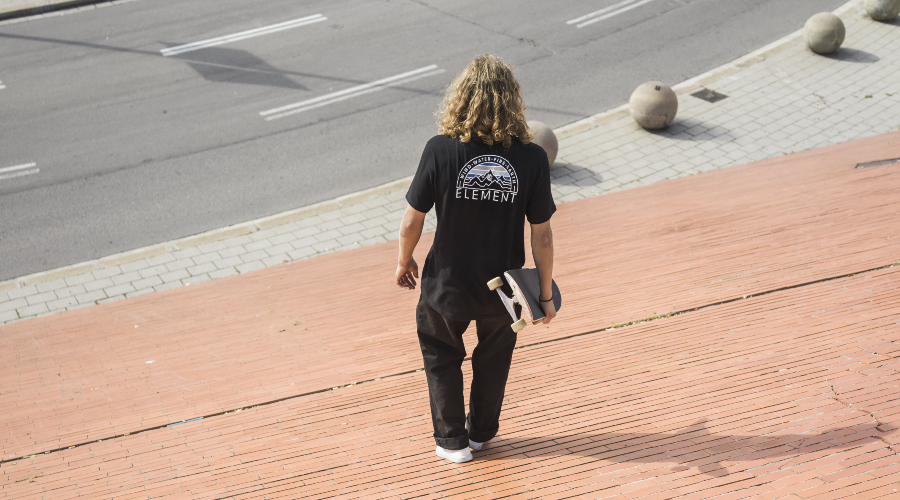
Before getting into skateboarding, you’ll want to make sure you have the right gear. The best gear will be suited to your size and the style of skating you want to do.
To make your skateboarding experience as easy as it is epic, the following guide explores the different factors to consider when choosing your next skateboard.
What Type of Skateboard Is Best for Beginners?
The first thing that a skateboarder needs to learn is how to stand on a board and push. At this stage of the game, you need a setup that will provide stability as you develop these skills.
When it comes to choosing your first deck you have two options:
- Pre-Built Completes - All-in-one, pre-assembled combinations of the essentials: a deck, grip tape, trucks, wheels, and bearings.
- Custom Completes - Individually choosing the components of your skateboard and assembling them yourself.
As a beginner, choosing an off-the-shelf pre-built complete, either a street deck or a cruiser is the easiest way to get started.
The following is a short list of the various types of pre-built complete setups available:
- Street decks are the classic popsicle-shaped skateboards you see people using to do tricks.
- Cruiser boards are built to get you from point A to point B with smoothness and stability.
- Mini cruisers are small and narrow plastic boards with large soft wheels that cruise well.
- Transition and old-school decks are boards that often have a flatter tail and tapered nose and are designed to roll best in one direction, aka directional. These are generally wide, stable decks.
- Longboards are designed to roll forever and offer good stability as skaters can opt for a wider stance. They’re often used in the skateboard discipline of downhill skating.
- Surf skates are a type of board with an ultra-tight turning radius thanks to their specialized trucks, which allow surfers to practice their moves on dry land.
For an in-depth look at the above, check out our dedicated article on “Types of Skateboards”.
The Right Skateboard for Your Practice
Skateboards debuted in the 1930s as cruisers made from wooden crates and roller skate wheels. They were used to surf sidewalks and down hills. Today, skateboards are used in a variety of terrain, from streets to concrete bowls and wooden ramps of all shapes and sizes.
For every type of terrain, there’s a skateboard to match. The following section will explore the four main types of terrain and which board is best suited for each.
If there’s a pro skateboarder that inspires you or has a similar stature, it’s worth seeing if they have a pro-model skateboard available for purchase. Buying a pro skateboard supports that particular skater and gives you the tools to mimic their style.
Street
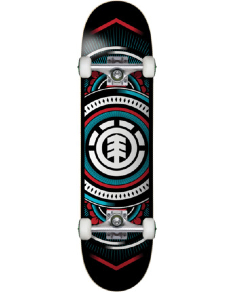
Street skating is best done with a standard popsicle-shaped street deck. The popsicle shape, with its relatively symmetrical nose and tail, allows skaters to do tricks using either end of the board.
Street decks are often paired with soft or medium wheels depending on the roughness of the terrain you’ll be skating. Softer wheels are better for rougher ground and harder wheels allow skaters to slide their boards out with minimal effort.
If your goal is to learn and perform tricks like ollies, kickflips and varials, then a street deck is what you need.
Bowl
Bowl skating, aka transition skating, is a high-speed discipline where skaters want grip, stability and wheels that roll fast. Transition boards will often be wider than street boards, allowing for wider trucks which translate into more stability.
Decks are commonly directional, meaning they’ll have a wider falter tail and a tapered nose, however, many skaters will use a more symmetrical shape for tricks – like varials – that change the direction of the board.
Skatepark
Skateparks offer skaters a mix of transition and street features. If you want to skate it all, you’ll need a versatile board like a symmetrical transition board or a standard street deck.
Wider boards will increase your stability when generating higher speeds in transition sections or when jumping down stair sets. Wheels with medium softness will strike a balance between having too much grip and being able to slide your board to ditch excess speed.
Cruise
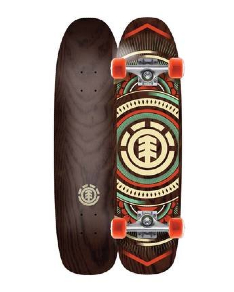
Cruiser skateboards are built to keep you stable and rolling on smooth sidewalks, gravel-covered parking lots, and all the terrain in between.
Wider and longer boards, such as old-school decks and longboards are designed for stability and efficiency, whereas shorter mini cruisers will allow you to make sharper turns.
For cruisers to roll smoothly on any terrain, selecting soft wheels and quality bearings is key. Many cruisers are sold as complete setups to simplify things.
What Size Skateboard Deck Should I Get?
Skateboards come in several sizes for various body types. The most common sizes for popsicle street decks in ascending order are:
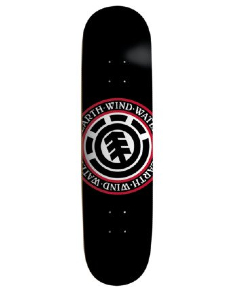
- Micro
- Mini
- Mid
- Full
The above classifications are made mostly on board length but they also vary in width. Depending on personal preference and terrain, full-size boards range between 7’6” to 9” wide. For more details on the dimensions of various boards, check out our dedicated “Skateboard Sizes” article.
Generally, thinner boards will flip faster and are better suited for technical skateboarding despite being more difficult to land on. Wider boards offer more stability and are easier to land on, however, they are heavier and slower to flip which makes them better for bowl riding and drops.
Board width truly is a matter of preference and as you progress in your skateboarding journey, you’ll figure out which size works best for you.
Height
The taller you are, the longer your legs will be, allowing you to handle a bigger board. A bigger board will allow you to stand with your legs wider apart, resulting in more stability.
The following chart is a good review of which deck type is best suited for different body types.
See the skateboard size chart below.
Age
Children have smaller legs, less muscle mass, and are lighter weight than adults. This means they have a tough time controlling full-size skateboards.
Mid, micro and mini boards are made shorter, thinner and lighter than adult boards. These smaller boards allow children to push, find balance, and turn with ease.
See the skateboard size chart below.
Shoe Size
Shoe size can also act as a general guideline for choosing board width but personal preference tends to be the biggest deciding factor in choosing board width.
Once you’re riding a full-size board, you can start experimenting with different board widths to find one that feels right.
See the skateboard size chart below.
Skateboard Size Chart by Height, Age & Shoe Size
| Deck Size | Deck Width (in) | Deck Height (in) |
Age | Shoe Size | Height (ft/in) |
| Micro | 6.5 - 6.75 | > 27 | > 5 | > 1 | 3’4” |
| Mini | 7.0 - 7.5 | 27.5 - 30.5 | 6 - 8 | 2 - 5 | 3’5” - 4’4” |
| Mid | 7.25 - 7.35 | 30.5 - 31.5 | 9 - 12 | 6 - 8 | 4’5” - 5’2” |
| Full | 7.5 > | 31.5 > | 13 > | 9 > | 5’3” > |
Assembling a Skateboard
If you decide to put together a custom complete rather than purchasing a pre-built setup, you’ll need to assemble the components yourself or with the help of a skate shop employee. For step-by-step instructions on how to set up wheels, trucks and bearings, check back soon.
The Pre-Built Complete Skateboard
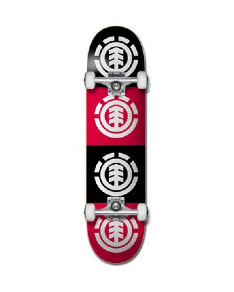
If you’re buying a first skateboard for yourself or as a gift, the pre-built complete is a great option. Pre-built completes come with all the essential components assembled and ready to go.
Pre-built completes can sometimes work out cheaper than custom completes as the individual parts are often produced by the same brand. They are a great starting point for skaters new to the sport.
Differences Between Adult and Kid Skateboards
The main differences between adult and child skateboards are deck width and length. Children’s boards are lighter, smaller and adapted to shorter legs and lighter body weights, allowing kids to control the board with greater ease. Adult boards are longer, heavier, and wider to support larger statures.
Buying a suitable board can save you from the added challenges of one that’s not compatible with your proportions, but there are options to suit everyone.
Choosing the Right Safety Gear
Falling is part of our sport, but more importantly, getting up after a fall is what fuels progression and resiliency.
To help yourself or a child get up after a fall, the following safety equipment is highly recommended:
- Helmets are the best way to protect against concussions and are a must when learning to skate.
- Knee pads reduce scuffed knees and are worn by pros at the highest level of transition skating.
- Elbow pads will protect elbows and avoid “swellbow”.
- Wrist guards are a good idea until you’ve mastered pumping around a skatepark.
Protect yourself and progress faster by wearing safety equipment.
Skateboarding fosters community and can support healthy and active habits. With this guide, you’ll be able to choose a board that’s best suited for you.
Related Guides
How To Choose Your Skateboard Size
How To Choose Skateboard Bearings
How To Choose Skateboard Wheels
How To Choose Skateboard Trucks